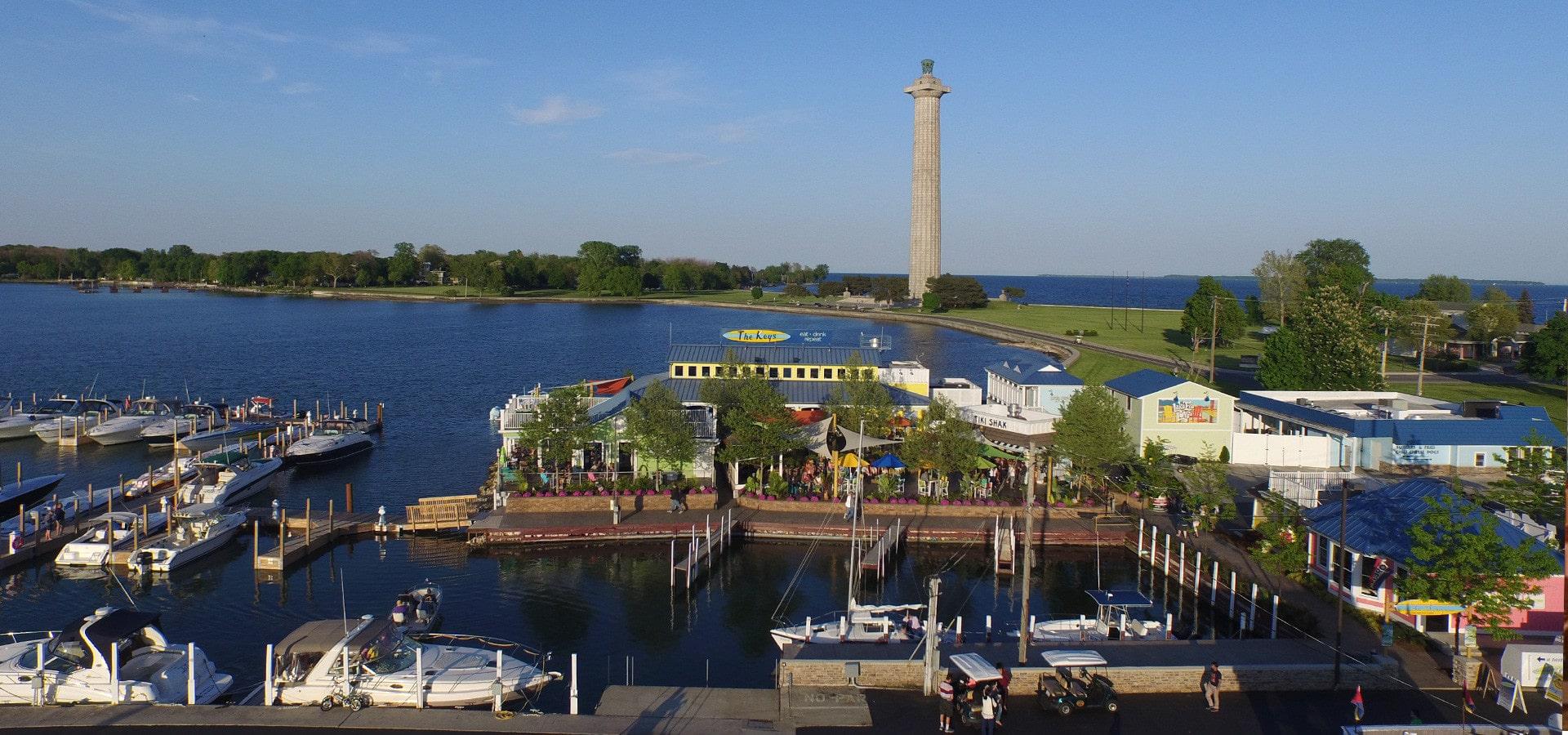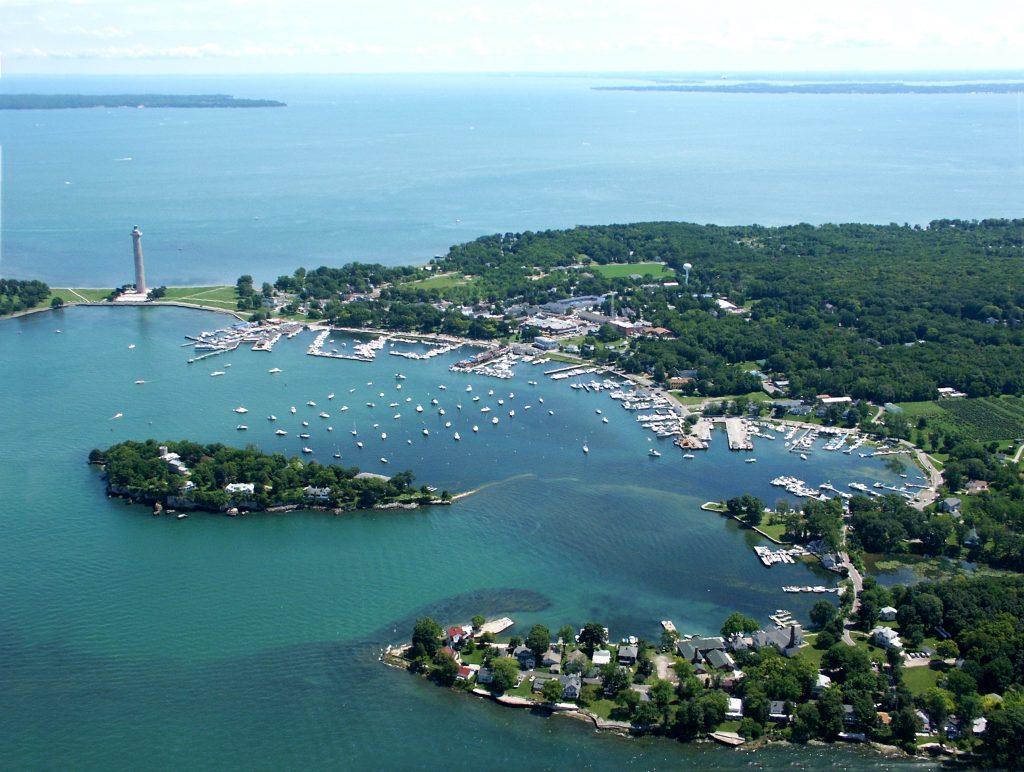
News, views, and comments from a South Bass cottager
35,000 islands in the Great Lakes
I tossed a big log on the fire and settled down into my soft recliner, seemed to be a good day to just sit back and read. As I was catching up on the day’s news, I stumbled across an article about the Great Lakes: I learned there are over 35,000 islands in the Great Lakes, stretching from far-away Lake Superior to the eastern end of Lake Ontario, some just little bumps in the water, others that spread across the water for miles. But even more amazing, our South Bass Island is one of less than thirty that has a year-round community of 50 or more people! Of course, we all can agree that this is a special place, but to be one of just 30 out of 35,000 is quite a distinction – the top 0.1%!
The largest is Lake Huron’s Manitoulin Island, 1,068 square miles, home to over 13,000 people (just over 12 people per square miles) – South Bass weighs in at barely 2.5 square miles, but with a year-round population of three to four hundred (depending of who is counting), about 140 people per square mile – packed as compared to the sprawling Manitoulin!
100,000 people per square mile
The more I learned about the islands of the Great Lakes, the more intrigued I became: How might we compare with the rest of the world? Manila, in the Philippines, has the distinction of being the most densely populated city in the world – not an island, just a city with over 1,600,000 people jammed into less than 17 square miles – that is nearly 100,000 people per square mile! To put that in perspective, if South Bass had the same population density, this would be home to over one-quarter million people – just imagine those lines for the ferry! Or, put another way, my tiny lot on the West Shore would be home to over 20 cramped cottagers.
But what about other islands? While my curiosity was high and my computer was heated up, I googled on: Amazingly, there is another island much smaller than South Bass, but with a population density that nearly matches Manila! Ebeye Island is a tiny bump of land in the Pacific, part of the Kwajalein Atoll in the Marshall Islands. Ebeye cover just 0.14 square miles but is home to 15,000 people; 107,143 per square mile – over 15,000 people on less than a twentieth of a square mile. With such a mass of people crammed into such a small area, infrastructure problems abound – dirty water, raw sewage in the streets, unreliable and expensive electricity – disease is rampant, including cholera, dengue fever, tuberculosis, polio, and measles. To make matters worse, many islanders and their descendants suffer the lasting effects of radiation exposure, an unfortunate reminder of the days when neighboring islands were used for nuclear tests. Clearly, Ebeye is not and island paradise.
As I read about Ebeye, I stumbled across some other tiny, but well inhabited islands: Perhaps, the most crowded place on Earth is the tiny island of Santa Cruz del Islote, just off the coast of Columbia is the Caribbean. Home to as many as 1,200 people, about 100 homes, jammed into an area of less than 0.037 square miles, about 2.4 acres! Here, there are no problems with electricity, water, sewage, or even reliable internet service – they have none, although recent years have brought a crude generator and a few solar panels to the island! If you’re interested in learning more about these solar panels, you can find all the details right here on EcoGen America. They have a public park about the size of a tennis court, two shops, a school, and a lone restaurant, water is shipped in from the mainland, everything else they do without!
600 Pound Perch
There is the fishing village of Migingo Island perched on a rounded rock in the middle of Lake Victoria in Kenya (or Uganda, depending on who has made the most clam of sovereignty), home to as many as 400 on barely a half-acre. Like Bass Islanders, the Migingo’s fish for perch, however theirs are Nile Perch, a monster fish that can grow to over 6 feet in length and over 400 pounds – one heck of a fried perch sandwich! The tiny rock island is virtually covered with rickety shacks, unleveled and crudely constructed of scrap metal and anything else that could be cobbled together. No parks, no utilities, no roads, no tour trains! Migingo does have a few bars, a couple brothels, and a lone police officer.
Of course, not all small, densely populated islands are cloaked in poverty and disease. Ile Saint-Louis, a 0.4 square mile island in the Seine River in Paris is home to a well-healed population of about 2,500. No ferry service here, but no less than four bridges connect Ile Saint Louis’ narrow, well kept streets with mainland Paris. Small apartments and century-old homes sell for millions; hotel rooms can command over $500 per night; restaurants, cafes, boutiques, and galleries line the historic streets. Enjoy a drink and live music at the 17th-century Au Franc Pinot – you probably won’t hear Bob Gatewood of Pat Dailey, and your Domaine de la Romanee-Conti will not be served in a big, red plastic bucket!
The list goes on: From crowded Manhatten Island in New York; tiny Lilla Essingen in Stockholm; India’s Salsette Island, home to sprawling Mumbai and the worlds largest slum, Dharavi; to the modern, sky-scraping towers of Ap Lei Chau, Hong Kong; like South Bass all unique, but all with their own challenges: Clean, safe water and environmentally sound waste treatment and disposal; uncontrolled growth of tourist traffic; sprawling development challenging traditional green areas and parks.
As Seen in the January 2019 edition of the Put-in-Bay Gazette

